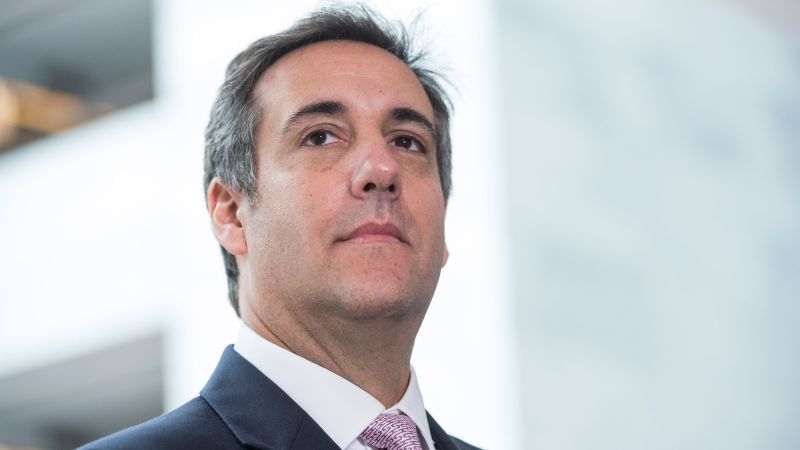Politics
Michael Cohen, once described by Trump as a ‘thug’, to provide crucial testimony in hush money case trial

Former Trump ally and fixer Michael Cohen has taken on a new role as a star witness in a hush money trial that could potentially implicate former President Trump in criminal activities. Cohen, who once served as Trump’s personal lawyer and confidant, will testify about the illegal falsification of business records related to payments made to adult film actress Stormy Daniels in 2016. This trial marks a pivotal moment in the ongoing legal drama surrounding Trump and his alleged involvement in various illicit activities.
Cohen’s relationship with Trump was characterized by loyalty and a willingness to do whatever it took to protect and serve his boss. However, after facing the consequences of his actions, including a prison sentence, Cohen has now turned against Trump and is seeking redemption by exposing the truth about their past dealings. Cohen’s testimony is expected to shed light on Trump’s criminal behavior and his efforts to conceal illegal activities through falsifying business records.
As a key witness in the trial, Cohen’s credibility will be scrutinized by Trump’s legal team, who will likely paint him as an unreliable witness with ulterior motives. Trump’s attorneys will argue that the payments made to Cohen were legal retainer fees and not hush money, as alleged by prosecutors. The trial will be a battle of narratives, with both sides seeking to sway the jury in their favor and cast doubt on the opposing party’s testimony.
Despite his checkered past and history of dishonesty, Cohen’s insider knowledge of Trump’s personal and business dealings makes him a valuable witness for prosecutors. His testimony is expected to corroborate evidence presented by the government, which alleges that Trump falsified financial records to conceal illicit activities. Cohen’s decision to testify against Trump and reveal damning information about their past relationship is seen as a quest for redemption and a warning to the public about the dangers of supporting Trump.
The outcome of the hush money trial could have far-reaching implications for Trump’s political future, as he faces multiple criminal indictments and legal challenges. While the trial itself may not significantly impact Trump’s standing in the eyes of his supporters, a conviction could jeopardize his chances of mounting a successful political comeback. The trial may also serve as a litmus test for Trump’s ability to evade legal consequences and maintain a public image of innocence.
In conclusion, Michael Cohen’s testimony in the hush money trial represents a critical moment in the ongoing legal battle between him and his former boss, Donald Trump. Cohen’s decision to cooperate with prosecutors and reveal damaging information about Trump’s alleged criminal activities underscores the complex and contentious nature of their relationship. As the trial unfolds, the public will be closely watching to see how this high-stakes legal drama plays out and what implications it may have for Trump’s future.

-

 Politics3 days ago
Politics3 days agoLatest news on the 2024 election: Biden fundraising in San Francisco and Seattle regions
-

 News3 days ago
News3 days ago£132,000 farmhouse on the brink of 150ft cliff starts demolition as owner evacuated – neighbor vows to stay until his death.
-

 Politics3 days ago
Politics3 days agoThe Biden Administration’s decision to publicly confront Israel over Rafah
-

 Uncategorized3 days ago
Uncategorized3 days agoThe Washington Post – Breaking news and latest headlines, U.S. news, world news, and video
-

 Tech3 days ago
Tech3 days agoHere's an In-Depth Look at How Cadillac Made it to Le Mans In 2023
-

 Lifestyle3 days ago
Lifestyle3 days agoSelena Gomez shares adorable photo with Benny Blanco amidst Justin Bieber baby news
-

 News3 days ago
News3 days ago16-year-old accused of defacing World War I statue in New York City
-

 Wellness3 days ago
Wellness3 days agoExperts Share the 11 Best Sunscreens for Oily Skin in 2024











